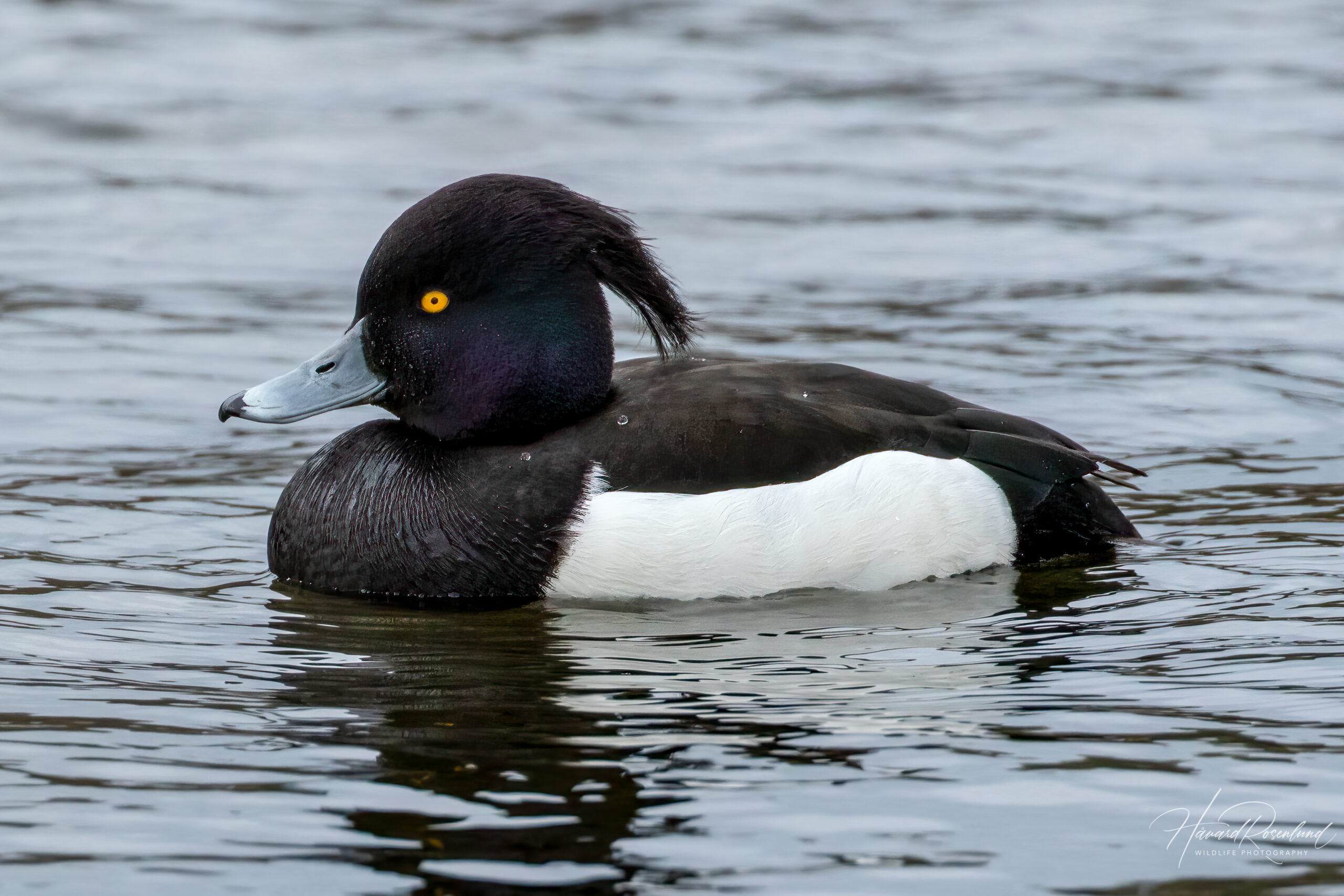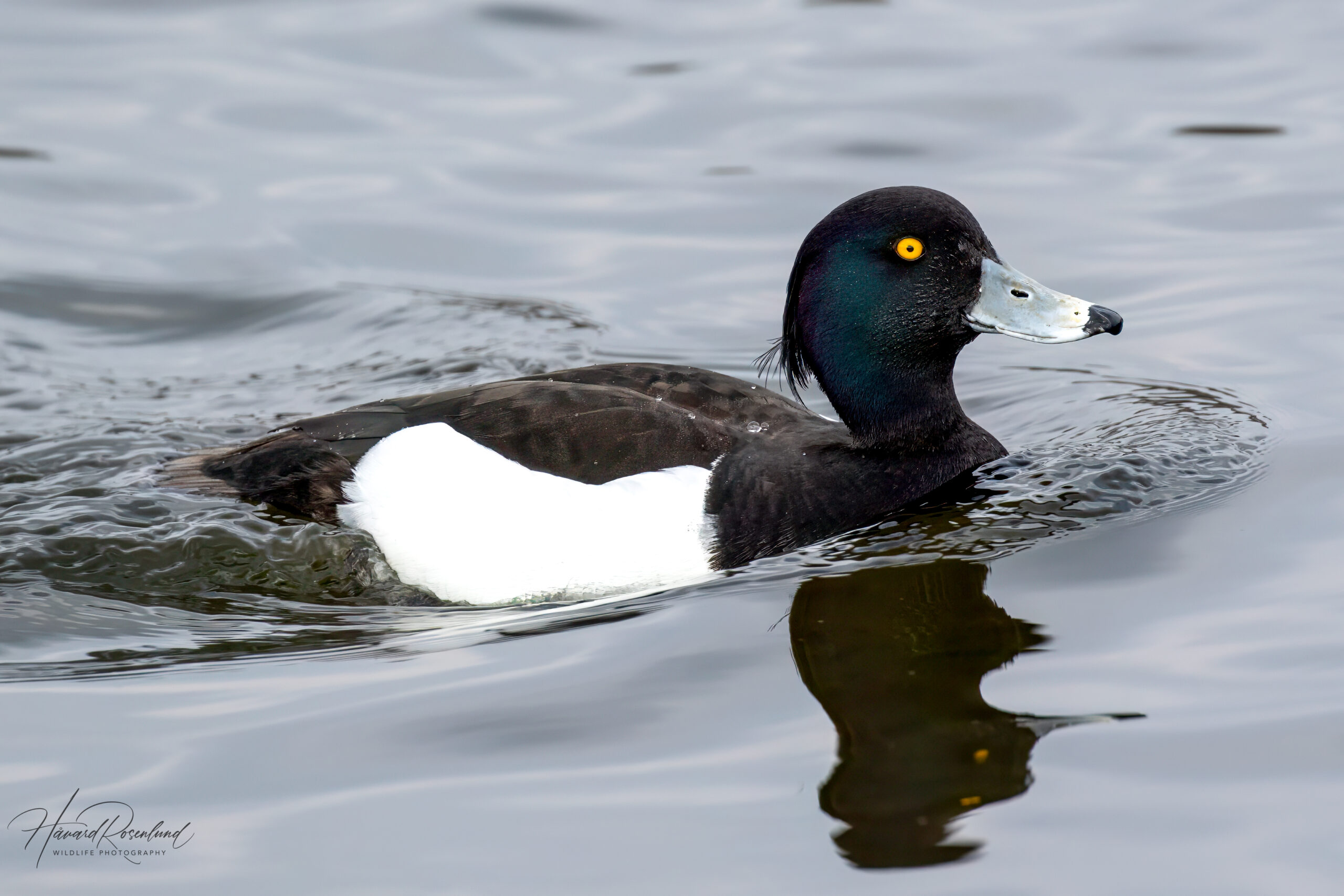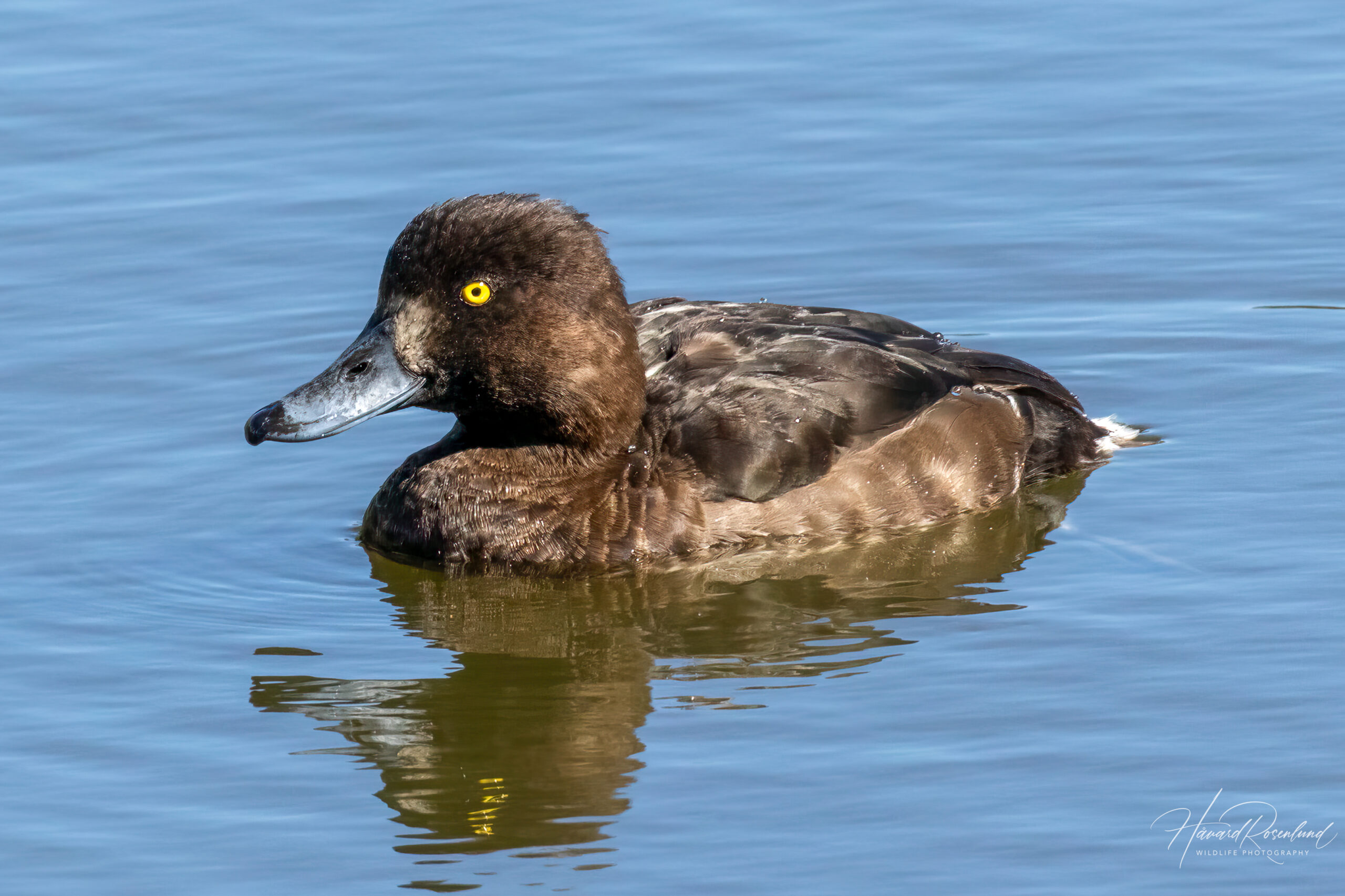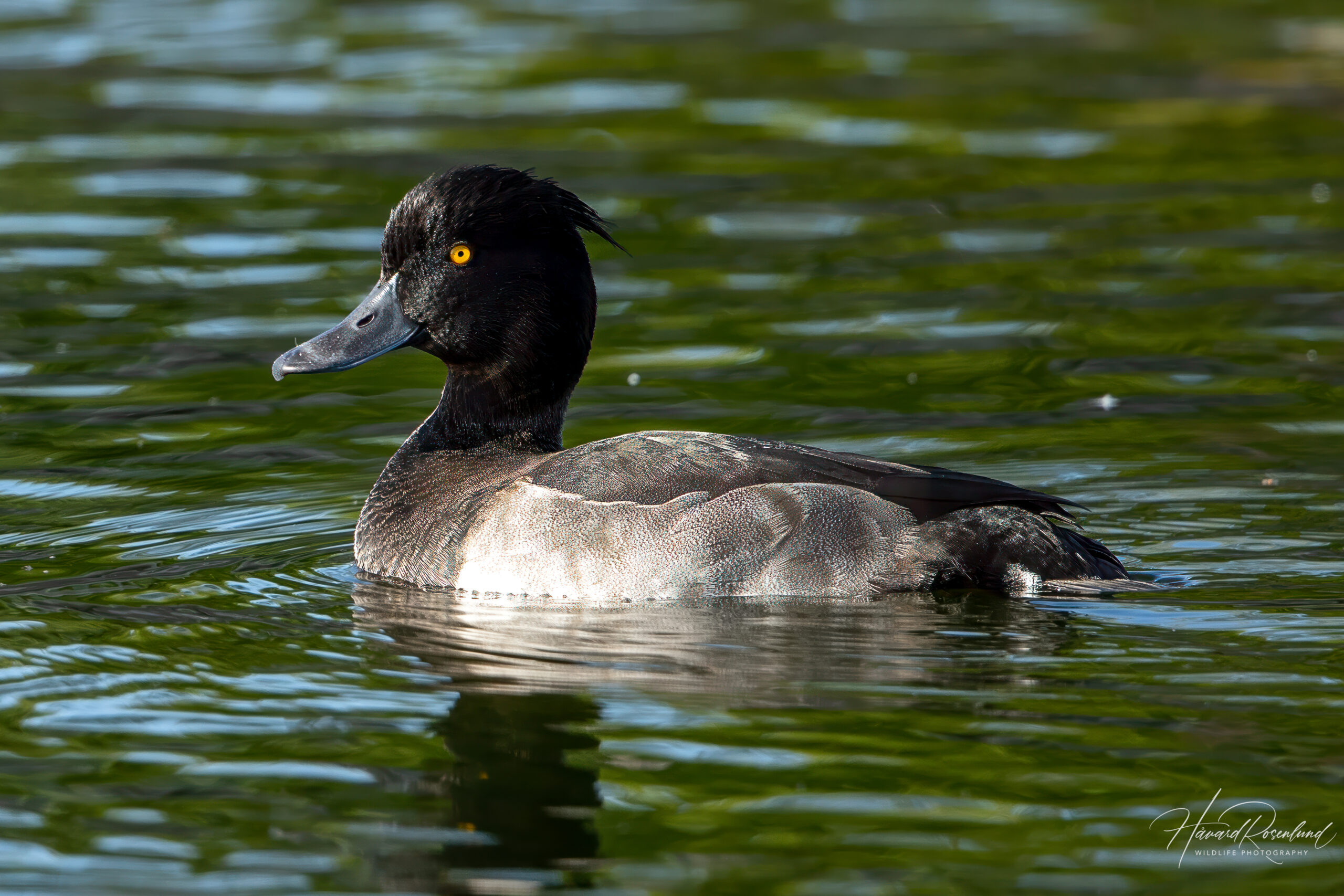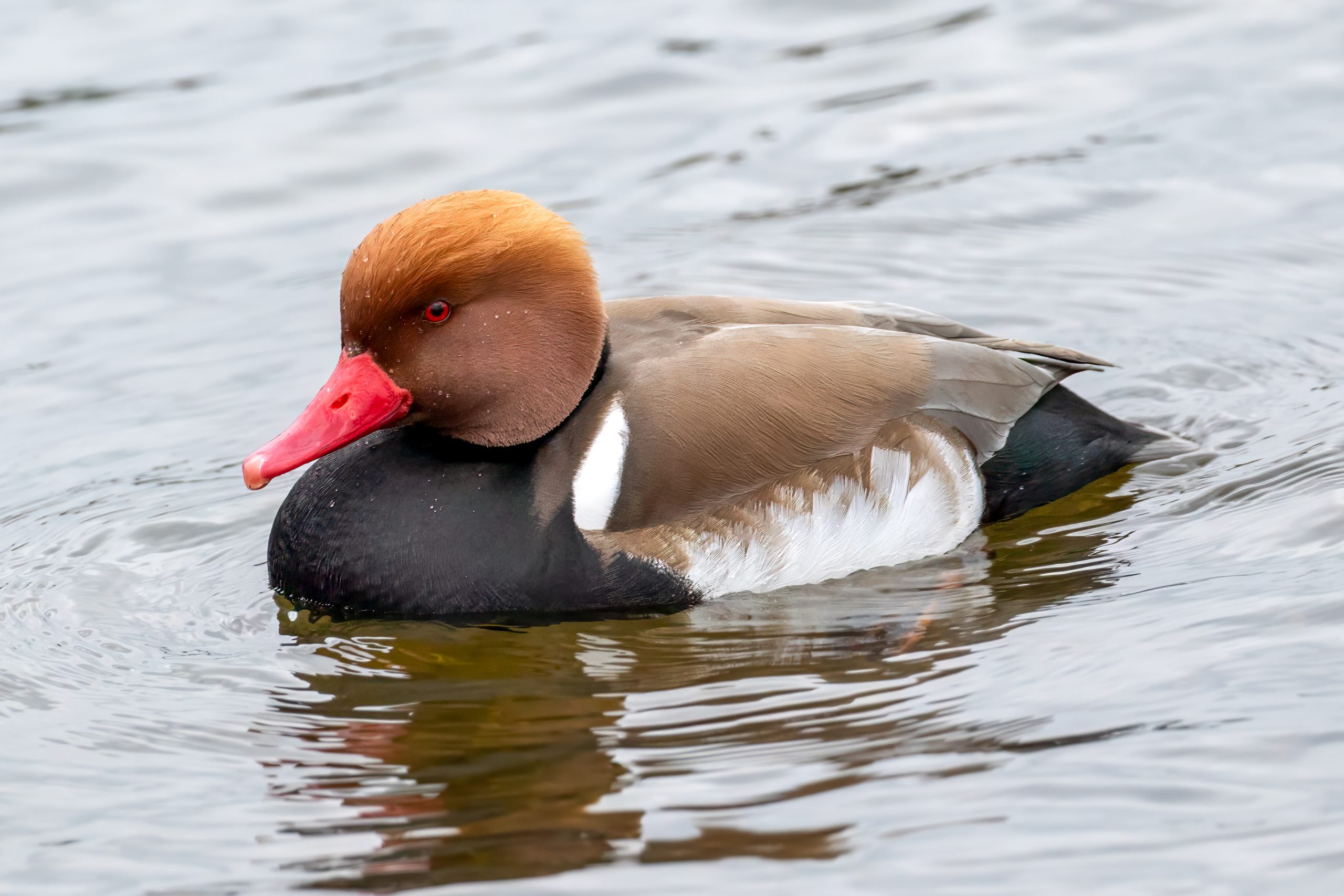Description
The tufted duck (Aythya fuligula) is a medium-sized diving duck found across much of Europe and Asia, extending their range into parts of northern Africa. It has a distinctive tuft of feathers at the back of its head, which is more prominent in males. Males are mostly black with white sides and a blue-grey bill, while females are brown with a narrower tuft. They measure about 40-47 cm (15.7-18.5 in) in length, with a wingspan of 67-73 cm (26-29 in). Even though the tufted duck is somewhat similar to the greater scaup (Aythya marila), it is easily distinguished from it and other similar species by the unique head tuft.
Diet & Habitat
Tufted ducks are highly adaptable and can be found in various freshwater habitats, including lakes, rivers, and ponds, often with plenty of vegetation. They feed mainly on aquatic invertebrates, small fish, and plant matter, diving underwater to forage for food. Their feeding habits are quite flexible, adjusting to the availability of food sources in their habitat. The tufted duck’s ability to dive deep and stay underwater for a considerable time allows it to exploit food sources inaccessible to many other duck species.
Migration
Tufted ducks are partially migratory, depending on their breeding location. Birds in the northern parts of their range tend to migrate southwards during winter to find unfrozen water bodies. The extent of their migration can vary widely, with some populations traveling long distances between their breeding and wintering grounds. Populations of Northern Europe only travel to Western Europe during winter (some to North Africa), whereas birds further east towards Asia travel to Central Europe. Central Asian birds travel to East Africa, and East Asian birds migrate to Southern Asia.
Nesting
Tufted ducks typically breed once a year, with the breeding season starting in late spring, around May. Males then use their tufts during courtship displays to attract females. Nests are made near the water’s edge, often hidden in dense vegetation. The female lays 8-11 eggs, which she incubates for about 23-28 days. The ducklings are precocial and leave the nest shortly after hatching, though they remain under the mother’s care until they fledge 45-50 days later.
Status
A widespread distribution and a large and stable population contribute to a status of least concern for the tufted duck on the IUCN Red List. However, habitat degradation and pollution are potential threats that could impact certain populations.




